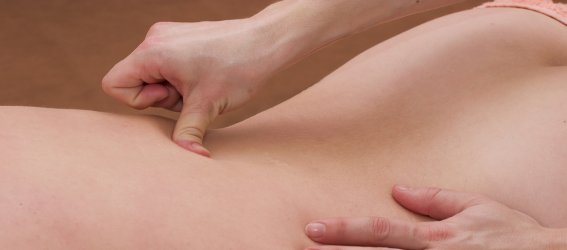Shiatsu Massage
By Anna Lynn Sibal

Finger pressure photo © Nikolay Suslov
In the western world, the massage technique known as shiatsu has come to be known by many names. Some of these names are barefoot shiatsu, namikoshi shiatsu, oha shiatsu, shiatsu-do, macrobiotic shiatsu and Zen shiatsu. However, most of the forms shiatsu has taken in the western world only use the basic principles that make up what the original shiatsu is, and are at times radically different.
Shiatsu is a Japanese massage technique that literally means "finger pressure": the word "shi" means "finger" while "atsu" means pressure. It is a massage technique that has been existence for over 2,000 years, and is actually a derivative of the ancient Chinese massaging and healing method of acupressure.
Just like acupressure – and acupuncture – it is believed in the practice of shiatsu that the body consists of 14 meridians, which each meridian corresponding to a major organ of the body. These 14 meridians serve as a channel through which energy or chi flows. An unhindered and balanced flow of chi in the body translates to good health.
Because chi must flow freely and in balance through the body, it is also believed in shiatsu that when chi is blocked, the body experiences illness. Illness also happens when chi is depleted in certain points in the body while flowing in excess in others.
In shiatsu massage, the aim is to remove the obstacles that block the flow of energy through the meridians of the body. It also seeks to restore the balance in this flow of energy. The removal of these obstacles and the restoration of balance in the body are done by pressing the fingers – and at times the elbows, knees and feet – on the acupoints, also known as pressure points, along the meridians of the body. The shiatsu therapist also manipulates the areas adjacent to these pressure points to further stimulate the body’s capacity for healing and to enhance the feeling of wellness.
Conventional western medicine does not have any proof that the meridians through which chi flows actually exist in the body, and so shiatsu and similar healing techniques are treated as complementary medicine. However, just like the other massages and healing techniques derived from acupressure, it is proven that pressing the acupoints in shiatsu helps in stimulating the release of endorphins and energizes the immune system, coaxing the body to fight against disease. Shiatsu can be used to address various health issues, from muscular pain to digestive pain and even emotional pain.
Shiatsu massage can be intense, and so it is not uncommon for patients to find themselves laughing or crying, wanting to shout out or be still, or display other emotions during the treatment. This is taken to be a sign that the energy flow within the body is being restored to the way it should be.
After a session of shiatsu massage, a client should feel a deep sense of calmness, relaxation and contentment. However, he or she should also expect to feel symptoms of cold and flu after the first couple of sessions; it is a side effect of shiatsu that is also taken to be a sign that the body is well on its way into mending.
|